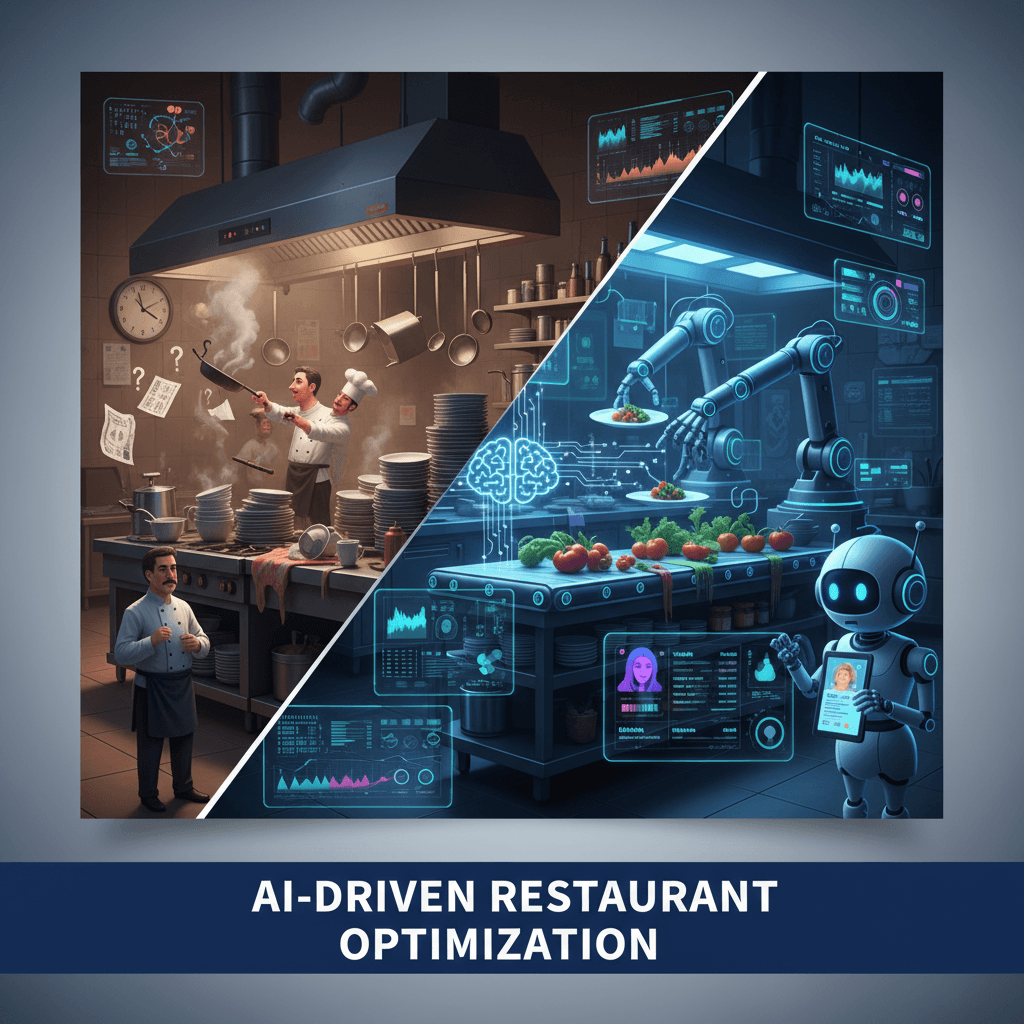Are Long Wait Times Killing Your Customer Relationships and Bottom Line?
Picture this: Your customers are standing in line for 15 minutes, checking their phones impatiently while your staff scrambles to keep up. Meanwhile, 73% of customers are ready to walk away after just one poor service experience, and 78% have already abandoned transactions due to excessive wait times. Whether you're running a restaurant during peak hours or managing a supply chain with complex logistics, long wait times aren't just an inconvenience—they're a business killer that costs you customers, revenue, and reputation every single day.
Industry data shows that wait times in retail and service environments have surged by 61% since 2022. While your competitors struggle with traditional methods, businesses implementing customer service AI are reducing wait times by up to 85% and handling most interactions without human intervention.
The Hidden Costs: Why Long Wait Times Are Destroying Businesses Across Industries
Long wait times aren't isolated incidents—they're systemic problems plaguing businesses worldwide. From restaurants losing hungry customers to supply chains grinding to a halt due to inefficient processes, the impact extends far beyond momentary frustration. Customer support ai and automation solutions are becoming essential as traditional methods fail to meet modern expectations for instant service and seamless experiences.
- Restaurants: Customers wait an average of 13-20 minutes during peak hours, leading to walkouts and negative reviews that damage reputation for months
- Retail Operations: Wait times have increased 61% since 2022, with customers abandoning purchases at alarming rates
- Supply Chain Management: Inventory delays and communication bottlenecks create cascading customer pain points throughout the entire operation
- Customer Service Centers: 67% call abandonment rates when customers face waits over 30 seconds, directly impacting revenue and satisfaction
- Healthcare and Professional Services: Extended wait times reduce appointment efficiency and create negative patient experiences
The Shocking Reality of Wait Time Impact
Current industry data reveals the true cost of inefficient customer service
Root Cause Analysis: Why Traditional Systems Create Bottlenecks
Before jumping to solutions, it's crucial to understand why these problems persist. Most businesses operate with outdated systems that create predictable bottlenecks and inefficiencies. Customer service and ai integration reveals that the issues go deeper than surface-level staffing problems—they're rooted in fundamental operational design flaws that technology can systematically address.
Manual Process Dependencies
Staff-dependent operations create single points of failure when volume increases or team members are unavailable, leading to immediate service degradation.
Reactive Instead of Predictive Operations
Traditional systems wait for problems to occur rather than anticipating and preventing them, causing unnecessary delays and supply chain pain points.
Disconnected Information Systems
Siloed data prevents real-time decision making, forcing customers to repeat information and creating inefficient handoffs between departments.
Inadequate Capacity Planning
Without ai tools for customer service and demand forecasting, businesses consistently under-prepare for peak periods, guaranteeing poor experiences.
Industry reports consistently show that businesses underestimate poor customer experiences by an average of 38%, indicating a widespread disconnect between operational reality and customer perception.
The AI Solution Framework: Transforming Operations with Customer Service AI
Artificial intelligence isn't just another tool—it's a fundamental transformation in how businesses handle customer interactions and operational challenges. AI powered customer service and ai customer service chatbot systems work 24/7, learn from every interaction, and scale instantly to meet demand. For businesses in the restaurant industry and supply chain management, this represents a shift from reactive crisis management to proactive excellence.
Intelligent Customer Communication
AI driven chatbots handle routine inquiries instantly, escalating complex issues to human agents only when necessary, reducing wait times by up to 85%.
Predictive Inventory Management
Inventory management ai and supply chain management ai predict demand patterns, preventing stockouts and reducing customer disappointment from unavailable items.
Dynamic Scheduling and Resource Allocation
Restaurant automation and scheduling ai optimize staff deployment and resource allocation based on predicted demand patterns and historical data.
Real-Time Performance Monitoring
AI powered supply chain systems continuously monitor performance metrics, identifying and resolving bottlenecks before they impact customer experience.
"The businesses that thrive in the next decade won't be those with the most resources, but those that use AI to deliver consistently exceptional customer experiences while their competitors struggle with outdated processes."— Customer Experience Research Institute, 2024
Implementation Strategy: Your Roadmap to AI-Powered Efficiency
Implementing using ai for customer service and ai in customer support doesn't require a complete operational overhaul. Our proven methodology breaks down the transformation into manageable phases, ensuring minimal disruption while maximizing impact. Whether you're focused on automated inventory management systems or comprehensive customer service automation, the key is strategic, phased implementation.
- Assessment and Baseline Establishment: Analyze current wait times, customer pain points, and operational bottlenecks to establish improvement targets and ROI metrics.
- Quick Win Implementation: Deploy ai automation services for the most impactful areas first—typically customer inquiry handling and basic scheduling optimization.
- System Integration: Connect AI tools with existing systems to ensure seamless data flow and unified customer experiences across all touchpoints.
- Advanced Feature Rollout: Implement sophisticated features like ai inventory management software, predictive analytics, and automated workflow optimization.
- Staff Training and Change Management: Equip your team to work alongside AI systems, focusing on higher-value activities while automation using ai handles routine tasks.
- Performance Optimization: Continuously refine AI parameters based on real-world performance data and evolving business needs.
Start with a pilot program in your highest-traffic area or most problematic process. This approach allows you to demonstrate ROI quickly while building internal confidence and expertise before scaling to other areas.
Prevention Methods: Maintaining Excellence Through Proactive AI Management
The most successful AI implementations don't just solve current problems—they prevent future issues from occurring. Real time customer service and customer service automation ai systems learn continuously, adapting to changing patterns and maintaining optimal performance even as your business grows and evolves.
Predictive Demand Management
AI analysis systems forecast busy periods and automatically adjust staffing, inventory, and resource allocation to prevent bottlenecks before they occur.
Automated Quality Assurance
Continuous monitoring ensures service standards remain consistent, with AI support systems alerting managers to potential issues before customers are affected.
Self-Improving Processes
Machine learning algorithms continuously optimize based on outcomes, improving inventory management using ai and customer satisfaction ai without manual intervention.
Proactive Customer Communication
AI order management systems keep customers informed about wait times, delays, or changes, managing expectations and reducing frustration proactively.
Monitoring System: Ensuring Continuous Improvement and Sustained Success
Implementing AI is just the beginning—sustained success requires comprehensive monitoring and continuous optimization. AI powered customer support and customer support ai chatbot systems generate valuable data that drives ongoing improvements, but only when properly tracked and analyzed.
Real-Time Performance Dashboards
Monitor wait times, customer satisfaction scores, and operational efficiency in real-time, enabling immediate adjustments when performance drifts from targets.
Customer Feedback Analysis AI
Automated analysis of customer feedback reveals trends and improvement opportunities, ensuring your AI systems evolve with customer expectations.
ROI and Cost Efficiency Tracking
Comprehensive cost efficiency in supply chain management and operational metrics demonstrate the financial impact of AI implementation across all business areas.
Predictive Maintenance Alerts
Scheduling ai and monitoring systems predict when AI components need updates or optimization, preventing performance degradation before it impacts customers.
Ready to Transform Your Customer Experience with AI?
You've seen the data—73% of customers abandon businesses after poor service, wait times are increasing across industries, and your competitors are already gaining advantages with customer service ai. Every day you delay implementation is another day of lost customers, reduced efficiency, and missed revenue opportunities. The question isn't whether you need AI solutions, but how quickly you can implement them to improve efficiency and reclaim your competitive edge.
Businesses implementing AI solutions early are seeing 60% higher customer retention rates and significant operational cost reductions. The competitive advantage window is closing—first movers in your market will establish customer loyalty that becomes increasingly difficult to overcome.
Frequently Asked Questions
- How quickly can customer service chatbot ai be implemented? Most businesses see initial results within 2-4 weeks, with full implementation typically completed in 8-12 weeks depending on complexity and integration requirements.
- What's the typical ROI timeline for AI customer service solutions? Most businesses achieve positive ROI within 3-6 months, with significant returns realized through reduced labor costs, improved customer retention, and increased operational efficiency.
- Can AI solutions integrate with existing restaurant and supply chain systems? Yes, modern ai solutions in business are designed for seamless integration with existing POS systems, inventory management platforms, and customer databases without requiring complete system overhauls.
- How do ai chatbots handle complex customer service issues? Advanced AI systems handle 85% of routine inquiries independently while intelligently escalating complex issues to human agents with full context, ensuring customers never feel like they're starting over.
- What about data security and privacy with customer feedback ai systems? Enterprise-grade AI solutions include robust security protocols, compliance with data protection regulations, and transparent privacy controls that protect both business and customer data.
- How does AI help with customer orders and inventory tracking systems? AI provides real-time inventory visibility, predicts demand patterns, automates reordering processes, and keeps customers informed about product availability, reducing disappointment and improving satisfaction.
Still have questions about how AI can transform your specific business challenges? Our team of AI implementation specialists is ready to provide personalized guidance. Book a free consultation to discuss your unique situation and develop a customized roadmap for leveraging ai for your business success.

